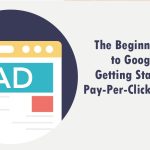For businesses and organizations to build their online presence and attract a larger audience in the digital era, a website is essential. Yet simply having a website is insufficient. It’s critical to ensure that your website is suited for various screen sizes and devices, given the growing popularity of mobile devices. The use of responsive website design is made here. A website’s appearance and content can be modified using the responsive design technique to match various screen sizes and resolutions. In this article, we’ll discuss the advantages of having a responsive website design and how it can improve your online visibility.
What Is “Responsive Website Design”?
Responsive website design (RWD) entails making web pages that display correctly on various devices and screen sizes. By doing this, web designers may produce a website experience considering how consumers access and engage with websites. Mobile devices are significant for every other user’s use, which is why it brings worldwide traffic. In light of this, website owners must make their sites accessible and straightforward, even on portable media like tablets or smartphones.
While making a website, make sure to consider the font size as per users’ devices. As responsive designs help brings more users’ attention to their screens. This is what is known as the web development and designing technique. Building a flexible, fluid, and device-optimized web page is also a responsive design. This will enhance a user’s browsing experience overall.
As per statics, the audience’s focus has shifted toward mobile browsing. This has become the reason for responsive designs. This lets people have the most straightforward means to connect across various platforms. Ensure a seamless user experience simultaneously. Responsive design is becoming increasingly crucial as consumers prefer to read news online on various devices (such as tablets and smartphones) in 2013, dubbed the “Year of Responsive Design.”
Why You Need A Responsive Website Design
As you have just read in the article’s previous section, a wealth of published statistics demonstrate that flexible web design creates a better user experience. This is why many website owners have been slow to adopt it over time. Here we include some of the main justifications for why you ought to give it a top priority.
1. Google Prioritizes Mobile-First
Google has, without a doubt, shifted in recent years to adopt a “mobile-first” strategy. Google has users worldwide, so the probability of any website rendered on multiple platforms has increased.
Now users do most of their searches on their smartphones which has opened more doors in this condition. One of Google’s multiple features is its algorithm. When is the website user-friendly and also responsive?
According to Google’s algorithm, the following website will likely be ranked. Google rewards websites that are mobile-friendly and have a mobile-responsive web design.
2. Improved Usability
Time spent on a page indicates whether your content is pertinent to the user’s search and whether they had a positive experience on your website. According to this reasoning, a person is not likely to stick around if they are unsatisfied with your content (or, in this case, their experience on your website). The loading time and usability of websites with responsive designs are faster.
When your website makes it simple for visitors to find the information they need later, users are more inclined to stay on it. Also, a website with outstanding usability may entice visitors to revisit it.
3. Better Customer Experience
Giving your users the content/ services they are interested in increases your chances of being seen by the Google algorithm. You need to offer a user-centered experience so that Google will reward your website with better search engine ranks.
If you want to give your users a satisfying experience, then build a well-responsive website design. Once you succeed in pleasing your visitors, they may subscribe, which gives you leads. Hence these leads become your potential clients.
4. Improved Page Speed
Page speed is one of the most significant components that impact your SEO. And your SEO impacts your search engine rankings. That means your page speed directly or indirectly impacts your search engine ranking.
The user’s experience with your website might be positively or negatively impacted by how quickly it loads. Thus, it should be no surprise that your website should be optimized for speedy, error-free loading.
Your website should be both desktop and mobile friendly. Hence, improve your website’s page speed to increase visitors and conversions.
5. Lower Bounce Rate
The term bounce rate is related to page speed. For instance, if your page speed is slow, the visitors won’t stay on your website longer. Hence bounce rate is a term used to describe how quickly visitors arrive at your website before leaving immediately.
This indicator may show whether a user’s search is satisfied by your website. A high rate of bounces also could mean that visitors to your website did not have the great experience they expected or that it wasn’t loading quickly.
Nonetheless, it goes beyond merely the substance. Even if your website has excellent material, users will leave if navigating it is challenging. They will then seek out information elsewhere.
6. Avoid Duplicate Content
Prioritizing your website’s responsiveness forces you to focus on its entire content and user experience (UX). While flexible site design is not always a way to prevent duplicate content, it can frequently aid in spotting this widespread mistake.
It’s simple to unintentionally establish a desktop and a mobile version of your website while building or redesigning it, which can result in duplicate content problems. Although the two URLs may differ, the content is frequently identical, making it difficult for Google to determine which content should be prioritized.
Responsive web design best practices stress the creation of a single, mobile-responsive version of your website. This way, there won’t be any duplicate URLs on different versions of your site.
Therefore, it’s crucial to watch for additional duplicate content problems.
7. More Social Shares
Users are more inclined to spread the word about your material to their peers when they enjoy it. The ease with which people may interact with your website, truly enjoy your material, and subsequently share it on social media is made possible by having a responsive website.
Many RWD designers construct websites with social sharing capabilities to make it simple for people to spread your material far and wide. Even though social shares naturally affect rankings, they help you expand your online audience. More visitors visiting your website due to increased social traffic could result in more consumers or subscribers for your company.
Your mobile-friendly site will encourage people to share your content, reaching a far wider audience with the help of simple social share buttons. A solid social media presence can also increase the visibility of your website.
The guiding principles of responsive web design’s advantages
The foundation of responsive web design is based on a few essential elements. We’ll review three key elements that make responsive web design feasible below.
Fluid grids
In contrast to fixed-width layouts, which always appear the same, fluid grids are grid systems that resize according to the user’s screen. Although the phrase is occasionally used interchangeably with “liquid layouts,” fluid grids ensure that all elements resize proportionately.
Divide the width of each element by the overall width of the page to determine the proper proportions. To do this, measurements should be taken from a high-fidelity model in a pixel-based image editor. Avoid rounding numbers if you don’t want your layout to show proportions that are off.
Media queries
There are limitations to fluid grids. We require media queries because new problems have emerged as browsers have become more constrained. Most contemporary browsers support CSS3 media queries.
Which lets websites gather information from specific users and conditionally apply CSS styles. Designers can use min-width media to apply particular CSS styles when the browser window’s width drops below a predetermined threshold.
Flexible images
Image resizing presents the most significant difficulty in developing responsive websites. A straightforward solution is to use CSS’s max-width property to ensure that images load at their original size unless the viewport is narrower than the image’s width.
Images with a maximum width of 100% of the viewing area will resize proportionately when the screen or browser narrows. Letting the browser dynamically resize images following CSS is possible rather than explicitly setting a height and width within the code. You should know that some outdated Windows browsers have issues rendering images appropriately when enlarged.
When scaling photos, you must consider load times and image resolution. Mobile devices can become much slower as larger images meant to be seen on monitors downsize. Because of this, it’s crucial to utilize responsive image features along with the correct sizes to maintain relevance with the context.
Primary Benefits Of Responsive Web Design
1. More mobile traffic
A survey from SimilarWeb claims that in 2015, more than half of all data came from mobile devices. All traffic to the top websites in the United States. To prevent customers from seeing distorted images or having a subpar site structure, businesses must create websites that render effectively on smaller devices.
While some companies still opt to create a separate website for mobile visitors, responsive design is increasingly common since it provides more versatility at a lower development cost.
2. Faster mobile development at lower costs
The time required to create a single responsive website is significantly less than the time required to create both a standalone mobile application and a typical desktop website. Responsive design is less expensive than the alternative because time equals money.
Even if building a responsive website initially costs more than building two separate websites, you’ll save money over time because of the maintenance costs, special setup fees, etc., of a website that uses two separate versions.
3. Lower maintenance needs
It takes more testing and support to maintain a separate mobile website. While using standardized testing procedures, responsive design ensures the best layout on every device. The need for two content strategies, two administration interfaces, and two design teams arises from having separate desktop and mobile sites.
The “one size fits all” responsive design philosophy makes life easier for consumers, business owners, and developers. Less time spent on maintenance means more time concentrating on crucial tasks like marketing and content creation.
4. Faster pages
Particularly mobile consumers have limited attention spans. Studies show that mobile users frequently leave websites that load over three seconds. In addition to being longer to navigate, a site that isn’t mobile-friendly may aggravate users to the point of abandonment. Your responsive website will load pages faster using contemporary performance approaches like caching and responsive image display.
5. Lower bounce rates
A responsive and mobile-friendly site will greatly improve the user’s experience. Visitors will stay for a while and explore different areas of your website. In contrast, keeping a visitor interested in a non-responsive website is considerably challenging, which increases the likelihood that they will leave.
6. Higher conversion rates
The war is not won by simply lowering your bounce rate. The key to converting new clients is consistent user experience across all devices. Users don’t want to be sent to websites designed for particular devices when considering whether or not to subscribe to a service because that procedure frequently takes longer. Users are less likely to become irritated or visit a competing website if only one safe website functions effectively across all platforms.
7. Easier analytics reporting
Understanding a website’s user behaviour and traffic is essential to making educated improvements. Developers must manage several conversion channels, funnels, and redirects while tracking visitors’ travel website versions.
A single adaptable webpage simplifies the monitoring process tremendously. With Google Analytics and other solutions created for responsive websites, you can combine tracking and statistics into a single study to see how your content is doing across various devices.
8. Improved SEO
Quality content and responsive web design are increasingly crucial for search engine optimization. Higher search ranks result from stronger backlinks and lower bounce rates, but mobile-optimized websites also reap additional SEO benefits.
The problem of duplicating material, which can hurt your search ranking, is avoided by using a single responsive website instead of distinct desktop and mobile versions.
9. The improved online browsing experience
First impressions count for a lot. Thus, you want those visiting your website to have a good experience using a desktop computer or a mobile device. Users are more likely to give up and visit another website during their initial visit if they often zoom in, out, and squeeze their screens.
10. The improved offline browsing experience
Responsive web design is advantageous to customers since it makes it simpler to continue reading material within HTML5 web apps without an internet connection now that many smartphones and tablets are HTML5 capable. Get familiar with HTML5 Application Cache.
Advantages of Responsive Web Design
Any estate agent committed to giving its audience the most incredible experience possible must use responsive web design.
Along with offering the best user experience across all devices, a responsive website also has several advantages. Here are seven benefits of responsive web design that may help you decide if you’re still on the fence:
- Attract a wider audience:
Your target audience will use various devices of all shapes and sizes to view your website. No matter how big or small their screen is, responsive design will fit them.
- Easier to monitor analytics:
You must watch two analytics if you have separate websites for various devices. Because a responsive website has just one webpage, your analytics is only one data source.
- Easier to maintain:
Similarly, having many websites for various devices necessitates updating each one individually. A responsive website eliminates the need for repeated changes.
- Boost for SEO:
Promoting your company is essential if you want to be noticed, and SEO is one of the best strategies to increase website traffic. Google now favors responsive websites, so they show up higher on search engine results to improve their search results for mobile visitors.
- Consistency in design and brand:
The appearance and feel of a mobile and standard website can be designed and customized, but they will never be identical. All devices will see the same design on a responsive website.
- Improved conversion rates:
A responsive website is the most excellent option for your web design needs because it offers the best user experience. Since it will reach a bigger, more targeted audience and provide them with the simplified, uncomplicated experience they desire, a responsive website will boost sales.
Guidance on how to reap the rewards of responsive web design
1. Prioritize “extreme” viewport sizes.
Catering to the smallest and largest devices when choosing which technological considerations to consider is an excellent way to ensure your website appears good in all browser sizes. To decide which sizes to target, review your stats.
While concentrating on the larger viewport assures legibility as text columns get wider, concentrating on the smaller viewport might assist you in determining which components are most crucial to the overall design. Also, it would be best to consider various input techniques; your website should be simple when scrolling or swiping.
2. Model what happens between breakpoints
You can’t dictate how your application should look on every screen. Many visitors will see layouts that fall between your desired size ranges. To avoid items shrinking in size or columns collapsing improperly, designers must consider what happens in between breakpoints. Creating sketches or wireframes helps model how web pages look in the interim.
3. Embrace feedback
A better product is always produced when designers seek opportunities for criticism, even though many are protective of their work. Separation of tasks is crucial, but product meetings, brainstorming sessions, and usability tests should also include coders. Use the cumulative knowledge of the team members, who will likely have experience in various fields.
The future benefits of responsive web design
The complexity of responsive design research will increase exponentially as the number of devices on the market rises. Although it’s simple to believe that the advantages of responsive web design have already been establishing, the pitch is probably still in its infancy. There will always be new obstacles since people are now accessing the web through virtual reality headsets and because smartphones have made it possible to create entirely new kinds of applications, including augmented reality games.
The future will present challenges for developers regarding lower maintenance costs, ongoing search engine optimization, and higher conversion rates. Recent advances in responsive web design have mostly emphasized limited screen compatibility, so this trend is not slowing down. It’s essential to consider individuals with more prominent displays for everyone to finally have a similar user experience.
The Final Thought
You can keep ahead of the curve with a responsive design. As the demand for media-rich mobile internet and applications grows, many significant implications must be addressed, including higher conversion rates, lower development and maintenance costs, and more search engine visibility. All stakeholders will benefit from these elements in combination with a cohesive design strategy.
Responsive design is essential to staying one step ahead of your competitors and gaining market share, given the explosion in tablet sales and smartphone usage; as 2013 goes on, the amount of material consumed on mobile devices will only expand.
After reading the following article hope our readers got to learn a lot about “responsive website design” and what you can do to have an excellent website to get more visitors.









